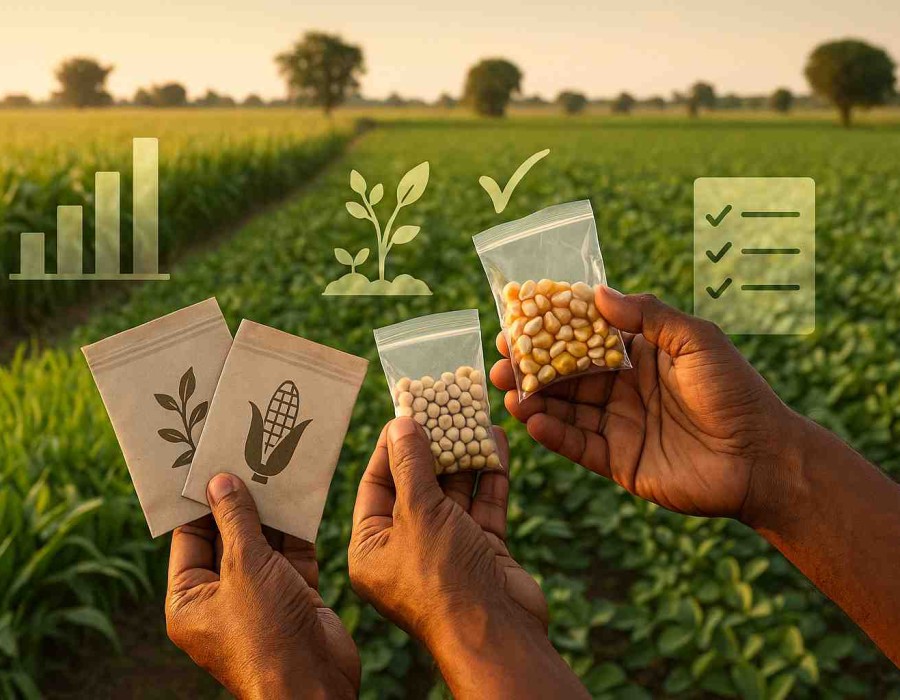Choosing the right fruit seeds for your region can make the difference between a thriving harvest and a season full of disappointment. Climate, soil composition, and local pest pressures all play a role in determining which varieties will flourish. By aligning your seed selection with regional conditions, you can maximize yield, flavor, and plant health while minimising input costs.
Your Region’s Growing Conditions
Every region has unique agricultural factors. Temperature ranges, annual rainfall, humidity levels, and seasonal length all influence fruit seed performance. A seed variety adapted to your specific environment will generally be more resilient and productive than a one-size-fits-all option.
The first step is to identify your USDA Plant Hardiness Zone or its equivalent in your country. This classification provides a baseline for what plants can survive in your area. Complement this with local extension service advice and farmer experiences to refine your selection.
Matching Seeds to Climate Zones
Climate zones dictate how fruit crops respond to seasonal changes. For example, apples thrive in temperate zones with cold winters, while papayas need consistently warm, frost-free environments.
- Tropical zones: Mango, banana, guava, and papaya
- Temperate zones: Apple, cherry, plum, and pear
Farmers looking to introduce new crops often start with small trials to test performance before scaling up. Those ready to diversify should source from trusted suppliers, making it worthwhile to buy fruit crop seeds from companies that specialize in region-specific selections.
Soil Compatibility and Nutrient Requirements
Soil type is just as important as climate. Sandy soils drain quickly and suit crops like melons, while loamy soils support a wide variety of fruit trees. Heavy clay can be challenging for root development but can be improved with organic matter.
Testing your soil for pH, organic content, and nutrient levels is essential before planting. The Soil Health Institute offers valuable guidelines on managing soil for optimal plant performance. Matching your seed choice to your soil’s capacity helps reduce the need for costly amendments.
Seasonal Length and Growing Windows
Some fruits need long, warm growing seasons to mature, while others produce well in shorter windows. Grapes and figs, for instance, require extended warmth, while strawberries can be productive in cooler seasons.
Understanding your local frost dates and seasonal patterns allows you to select varieties that will reach maturity before weather extremes set in. This ensures consistent harvests year after year.
Regional Pest and Disease Pressures
Every region has its own set of pest and disease challenges. Coastal areas may face fungal issues from high humidity, while arid zones might struggle with mites or borers. Choosing varieties with built-in resistance can reduce the need for chemical intervention.
The Integrated Pest Management (IPM) resource center provides region-specific guidance for managing threats and selecting compatible crop varieties. By choosing seeds bred for local resilience, farmers can improve crop survival rates and reduce input costs.
"A seed’s journey to maturity is as much about where it’s planted as how it’s cared for."
Local Market Demands and Profitability
Even if a crop grows well in your area, it must also meet consumer demand to be profitable. Researching local market trends helps identify varieties with strong sales potential. For example, in some regions, exotic fruits like dragon fruit or passionfruit command premium prices, while in others, heritage apples are in demand.
Balancing crop suitability with market appeal ensures that your harvest is both abundant and profitable.
Balancing Hybrid and Traditional Varieties
Seed selection needs to be adaptable in light of changing weather trends. Once-unsuitable cultivars may now become viable, while crops that flourished ten years ago may now suffer. Staying ahead of these changes can be achieved by keeping an eye on climate data and taking part in local agricultural trials.
To adjust to changing conditions, forward-thinking farmers are experimenting with heat-resistant citrus, drought-tolerant grapes, and early-maturing stone fruits.
Adapting to Climate Change
Seed selection needs to be adaptable in light of changing weather trends. Once-unsuitable cultivars may now become viable, while crops that flourished ten years ago may now suffer. Staying ahead of these changes can be achieved by keeping an eye on climate data and taking part in local agricultural trials.
To adjust to changing conditions, forward-thinking farmers are experimenting with heat-resistant citrus, drought-tolerant grapes, and early-maturing stone fruits.
FAQs
How do I know if a fruit seed is right for my soil type?
Conduct a soil test before planting and choose varieties that match your pH, texture, and drainage conditions.
Are hybrid seeds better for all regions?
Not necessarily. Hybrids excel in yield and resilience, but traditional seeds can outperform them in specific climates or niche markets.
Should I focus on market trends or climate adaptability first?
Climate adaptability comes first. A profitable crop is only valuable if it can grow successfully in your region.
Continuing the Search for the Perfect Seed Match
The ideal fruit seed for your area strikes a balance between market demand, insect resistance, soil compatibility, and climate adaptability. Successful growers will continue to experiment as agricultural conditions change, fusing innovation and tradition to produce resilient and lucrative crops. Finding the right match is a lifelong process, and it's worthwhile to pursue every season.





Comments